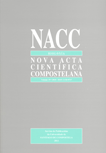¿Afectou o lume á estrutura e á diversidade vexetal das fragas do Parque Natural "Fragas do Eume"?
Contenido principal del artículo
Resumen
Os incendios forestais son un grave problema no tocante á diversidade da comunidade vexetal, e son pouco coñecidas as alteracións que producen nos bosques caducifolios temperados. O obxectivo deste traballo foi determinar ditos efectos sobre a diversidade e a estrutura da comunidade vexetal da fraga no Parque Natural “Fragas do Eume”, producidos polo incendio de 2012. En 16 mostras de Fragas Control e en 16 de Fragas Queimadas, estudáronse un ano despois do incendio diferentes variables estruturais da vexetación, de especies fanerógamas e pteridófitas, e logo obtivéronse diversas medidas de diversidade e de grupos de especies segundo características ecolóxicas. Os resultados obtidos amosan que non houbo cambios significativos en canto á diversidade vexetal entre Fragas Control e Queimadas, nin entrada de especies invasoras, e sí houbo en certas variables estruturais. A vexetación do ecosistema de bosque mixto do Parque Natural Fragas do Eume recuperouse con rapidez tras o incendio acontecido, pola súa alta resiliencia e tamén pola época en que aconteceu o incendio.
Palabras clave:
Detalles del artículo
Artículos más leídos del mismo autor/a(s)
- Elvira Blanco Pérez, Margarita Basanta Alves, Especies invasoras: cambios na investigación ecolóxica ao longo de medio século , Nova Acta Científica Compostelana: Vol. 22 (2015)


